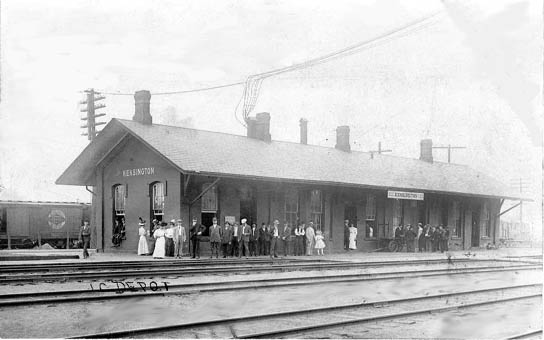Riverdale in Chicago
Located on the far south side of Chicago, Illinois, Riverdale is a community with a vibrant history and a dynamic present. This article takes a deep dive into the historical and contemporary aspects of Riverdale, exploring its neighborhoods, demographics, politics, transportation, and notable residents.
Historical Setting
Riverdale’s story begins in the early 19th century when the area was first settled by non-indigenous individuals. The first settler, David Perriam, arrived in 1837, claiming land north of the Calumet River in an expanse referred to as Wildwood. This land was later acquired by Colonel James H. Bowen, who played a significant role in the construction of the Cal-Sag canal that connected the Calumet River to the Illinois River.
Industrial Evolution
By the mid-19th century, the area had evolved into a bustling industrial hub. The Illinois Central Railroad, which arrived in 1852, catalyzed this transformation. The railroad brought an influx of industries, including distilleries, lumber yards, ice houses, cattle pens, barrel makers, and a sugar refinery. These industries, in turn, attracted a diverse workforce, contributing to the area’s growing cultural mosaic.
The Neighborhoods
Riverdale is home to several distinct neighborhoods, each with its unique characteristics and charm. These include Altgeld Gardens, Eden Green, Golden Gate, and Riverdale.
Altgeld Gardens
Altgeld Gardens is named after the Altgeld Gardens Homes, a Chicago Housing Authority public housing project. The neighborhood extends from 130th Street in the north to the Calumet River in the south, and from approximately Langley Ave. in the west to the railroad tracks west of Doty Ave. in the east.
Eden Green
Eden Green is another notable neighborhood within Riverdale. It extends from 130th Street in the north to the Calumet River in the south, and from the Canadian National railroad tracks in the west to the Union Pacific tracks in east.
Golden Gate
Golden Gate is named after Golden Gate Park, a park on S. Eberhart Ave. operated by the Chicago Park District. The neighborhood extends from 130th Street in the north to the Calumet River in the south, and from the Union Pacific railroad tracks in the west to approximately Langley Ave. in the east.
Riverdale
The Riverdale neighborhood extends from the Calumet River in the north to 138th Street in the south, and from Indiana Ave. in the west to the Union Pacific railroad tracks in the east.
Education
Riverdale boasts several educational institutions, including Aldridge Elementary School, Carver Military Academy High School, CICS Lloyd Bond, Dubois Elementary School, and George Washington Carver Elementary School.
Transportation

Riverdale residents have access to various modes of transportation. The Chicago Transit Authority provides bus service via the #34 South Michigan bus. PACE Suburban Bus #353 has a stop near the neighborhood at Indiana Avenue and 130th Street.
Parks
Several parks and open spaces add to Riverdale’s charm. These include Golden Gate Park, Kensington Marsh, Little Calumet Marsh, and Beaubien Woods.
Notable Residents
Riverdale has been home to several notable individuals, including NFL wide receiver Jason Avant, researcher in the field of psychometrics Lloyd Bond, and NBA player Terry Cummings.
Modern Riverdale
Today, Riverdale continues to be a vibrant community. Despite facing economic challenges, the area has shown resilience and an ability to adapt to changing circumstances. It maintains a strong sense of community, providing a home to diverse populations and contributing to the vibrant tapestry of Chicago’s South Side.
The Future of Riverdale
As Riverdale looks to the future, it continues to build on its rich history while embracing the promise of new opportunities. With its prime location, strong community spirit, and a rich cultural heritage, Riverdale is well-positioned to continue its evolution and growth.
Riverdale, Chicago, is a community steeped in history and teeming with potential. From its early settlement days to its transformation into an industrial hub, and its current status as a diverse and vibrant neighborhood, Riverdale’s story is a testament to resilience, adaptability, and community spirit.


